6 Benefits and Properties of Frozen Mango
Mango is a sweet, versatile and delicious fruit widely known across the world. Being a seasonal fruit, everything has to coincide so that you can find it throughout the year, unless you find it and eat it frozen. That is why we detail 6 Benefits and Properties of Frozen Mango.
Mango is a tropical fruit with a very characteristic flavor that has great nutritional properties and benefits for our health. It is of Asian origin and is within the group of semi-acidic fruits and its tree is from the same botanical family as the pistachio.
Mango has an ovoid, rounded shape and flattened oscations, varying in weight from 150 grams to 2 kilos. Depending on the variety, the color can vary between green, yellow, different shades of pink, red and purple. Also, the thickness of the peel and its color varies while its pulp is edible.
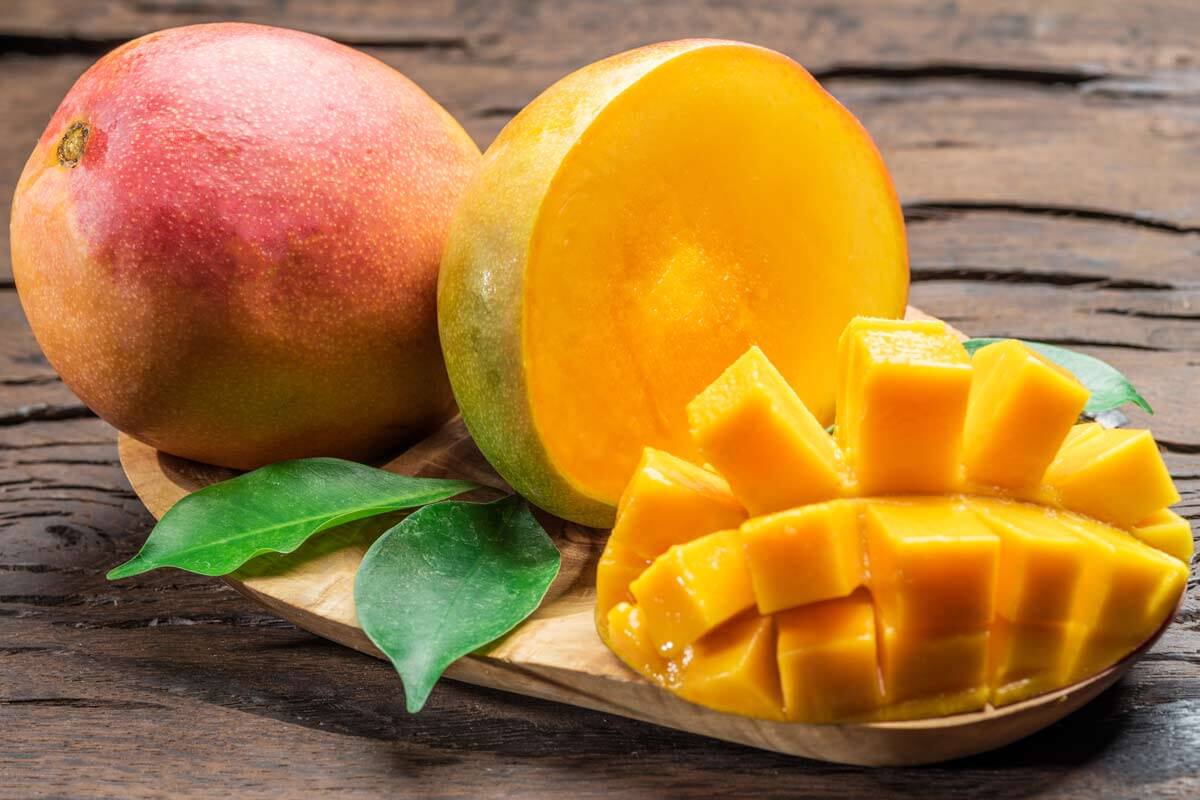
6 Properties of Mango
Mango, in addition to being delicious, has several nutritional properties and here we detail 6 of them.
1. Keeps bones and muscles in shape
The combination of magnesium and potassium makes the mango the indicated fruit to keep the musculoskeletal system in good shape (from preventing osteoporosis to muscle cramps).
Likewise, these minerals participate in the control of blood pressure, promote the elimination of fluids and the proper functioning of the kidneys.
2. Alkalize and thins the blood
The weak organic acids that mango provides, once assimilated in the body, combine with minerals, and give rise to salts that have the ability to fluidize and alkalize the blood.
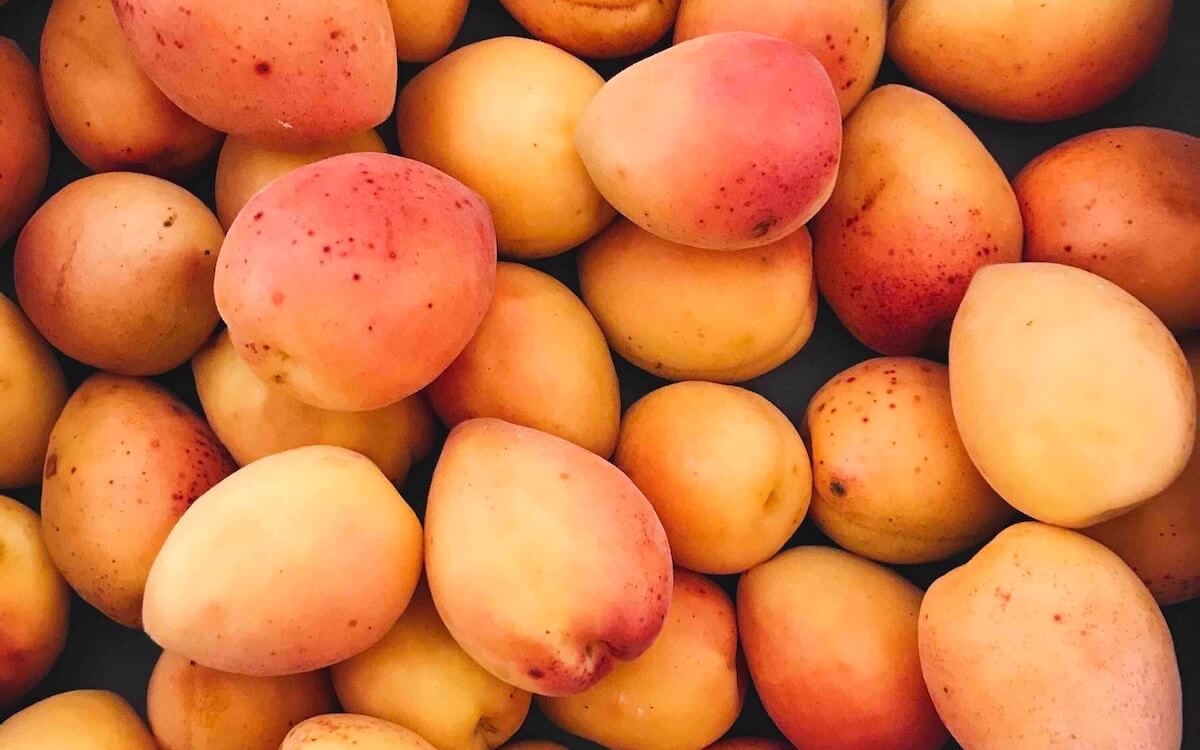
3. Promotes the assimilation of nutrients
Mango also has enzymes with properties like those of papains from papayas or bromelain from pineapples. These enzymes promote the assimilation of macronutrients and are partly responsible for the fact that mango is so easy to digest, so much so that it is said to “soften” and “purify” the stomach and intestines. That is why it is recommended to all people who suffer from digestive problems.
4. Stimulates defenses
Antioxidant minerals and vitamins, along with phenolic compounds, which mangos process, help the immune system prevent and fight disease.
Quercetin, isoquercetin, astragalin, fisetin, gallic acid, and methylgalate all have antioxidant effects.
5. Very rich in fiber
Mango, like all fruits in general, also provides a significant dose of fiber, which helps prevent certain types of cancer, such as digestive cancer, it also prevents constipation and lowers bad cholesterol, which protects the heart and circulatory system.
6. An aid for sight and prevention against cancer
It is rich in beta carotenes, considered a provitamin A. The liver transforms them and converts them into vitamin A when the body needs it. In this way, our body avoids the excess of this vitamin.
This type of vitamins also helps us to prevent ocular degeneration, by lubricating our eyes, to prevent infections and in general with our ocular health.
Thanks to the beta carotenoids present in mango, our body is able to prevent certain forms of cancer, especially prostate cancer, as detected by an extensive study carried out at Harvard University. This antioxidant has also been shown to have a protective effect on the appearance of colon cancer.
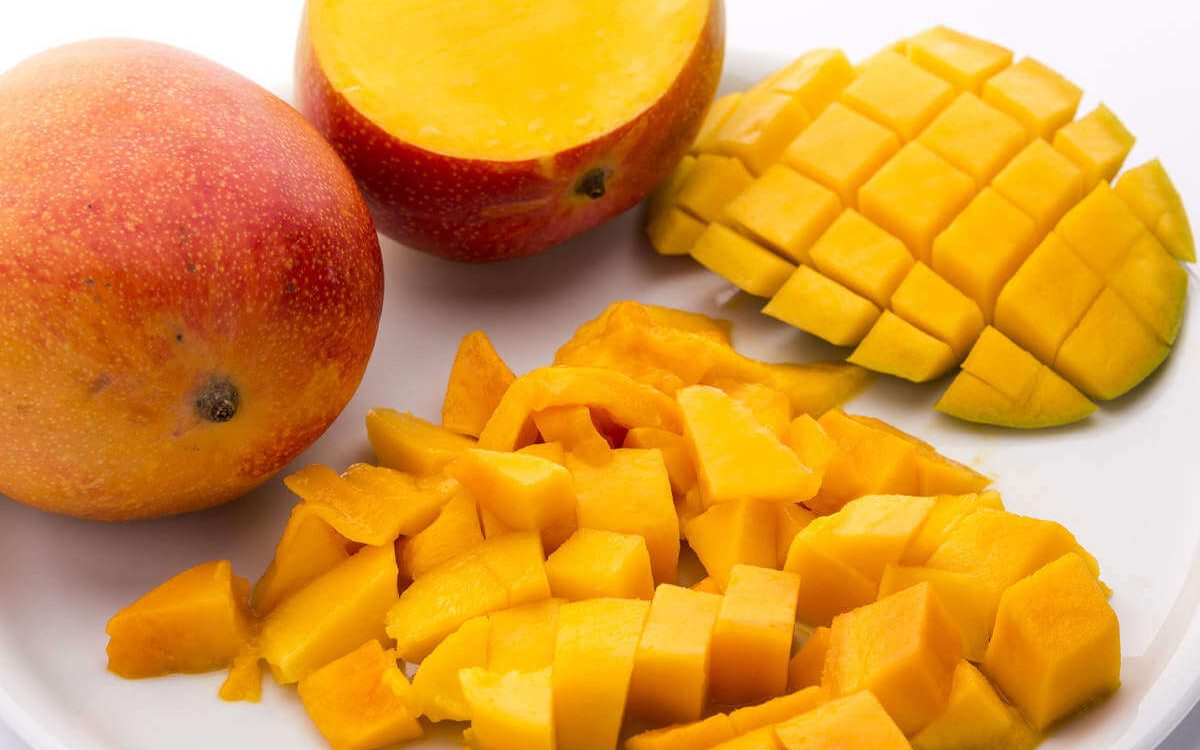
Benefits of eating frozen mango
Consuming mango undoubtedly brings many health benefits, however, being a tropical and seasonal fruit, it is sometimes very difficult to access it.
1. Availability
One of the biggest advantages of frozen mango is that we can find it throughout the year. All countries have limited harvest times; however, a frozen option allows keeping large inventories to supply people with frozen fruit during the months when there is no fresh mango.
Due to the great logistics involved in fresh fruit, the price that one can get frozen mango tends to be a little cheaper precisely because it involves processing in months of low prices.
2. Different varieties
Another advantage is that one can get the different varieties of mango depending on the store or the place where you usually do your shopping. Mango has many varieties such as Tommy, Kent, Haden, Keitt, Cavallini and other varieties which are not always marketed fresh.

3. Ease and comfort
Like all frozen food, the comfort and handling compared to a fresh one is very distant. The frozen mango is as easy to handle as taking a bag out of the freezer, defrosting what you are going to consume and storing the rest.
Without making disasters in the kitchen, getting dirty, cutting the fruit or even running the risk of it being overripe and spoiling.
4. Reduction of waste
This is one of the world’s problems and it happens in many houses. Food waste is a global problem due to very poor food management in distribution chains and management within the home.
To compare, a frozen mango can last up to 2 years maintaining an intact cold chain compared to a fresh mango that can last less than 1 month after being harvested.
This allows people to save time, money and distribute their resources in a better way.
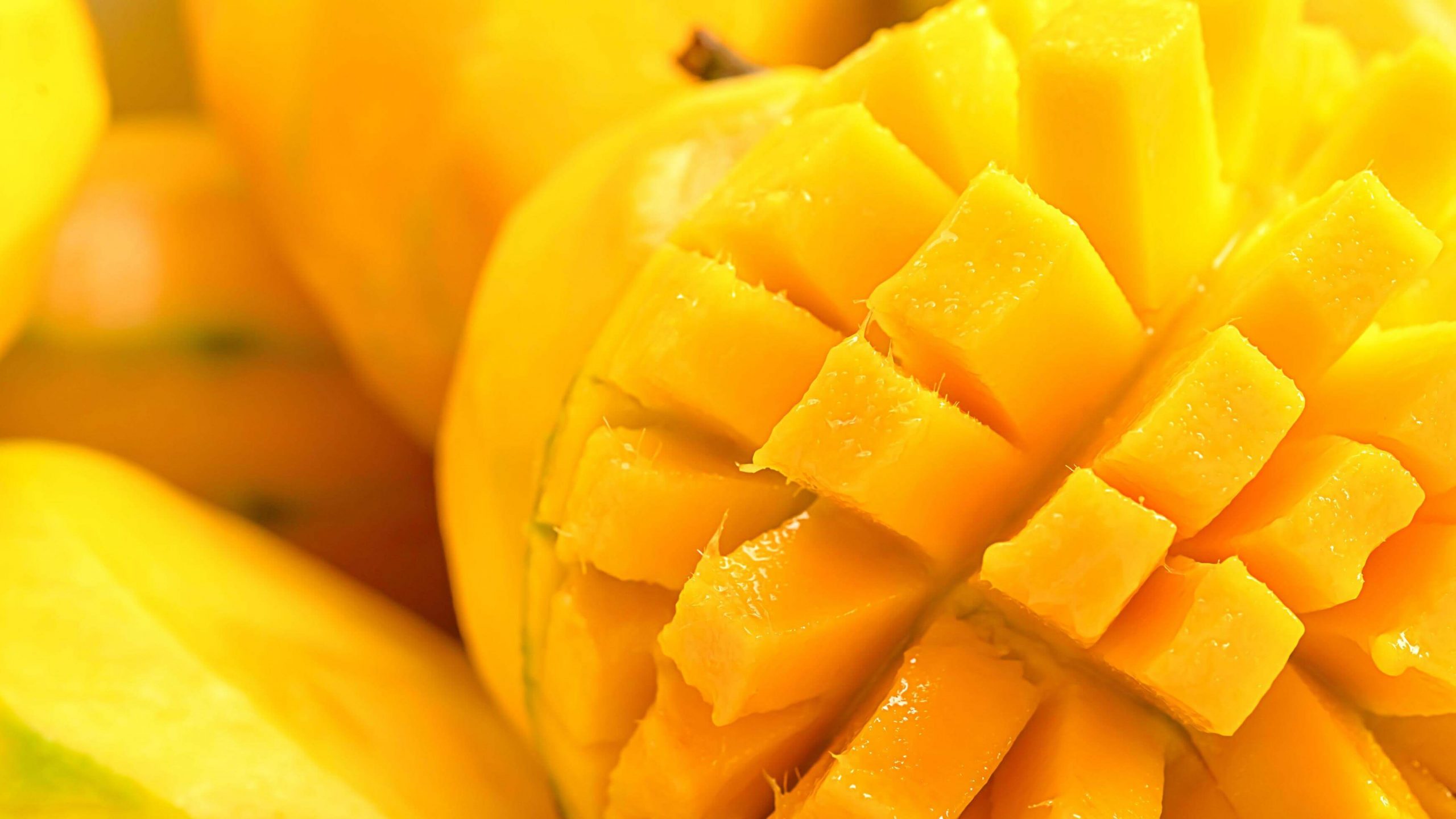
The only disadvantage that frozen mango can have is that it can lose its flavor and properties of fresh when defrosting, but being frozen using the Prime Freezing System, this problem is eliminated.
As you have read in other articles, the Prime Freezing System is a process that keeps the properties of the fruit intact when defrosting since its fiber does not break during freezing. As easy as defrosting and eating it fresh in snacks, snacks and fruit salads with its flavor just as fresh.
Recipes with Mango
Mango Pudding
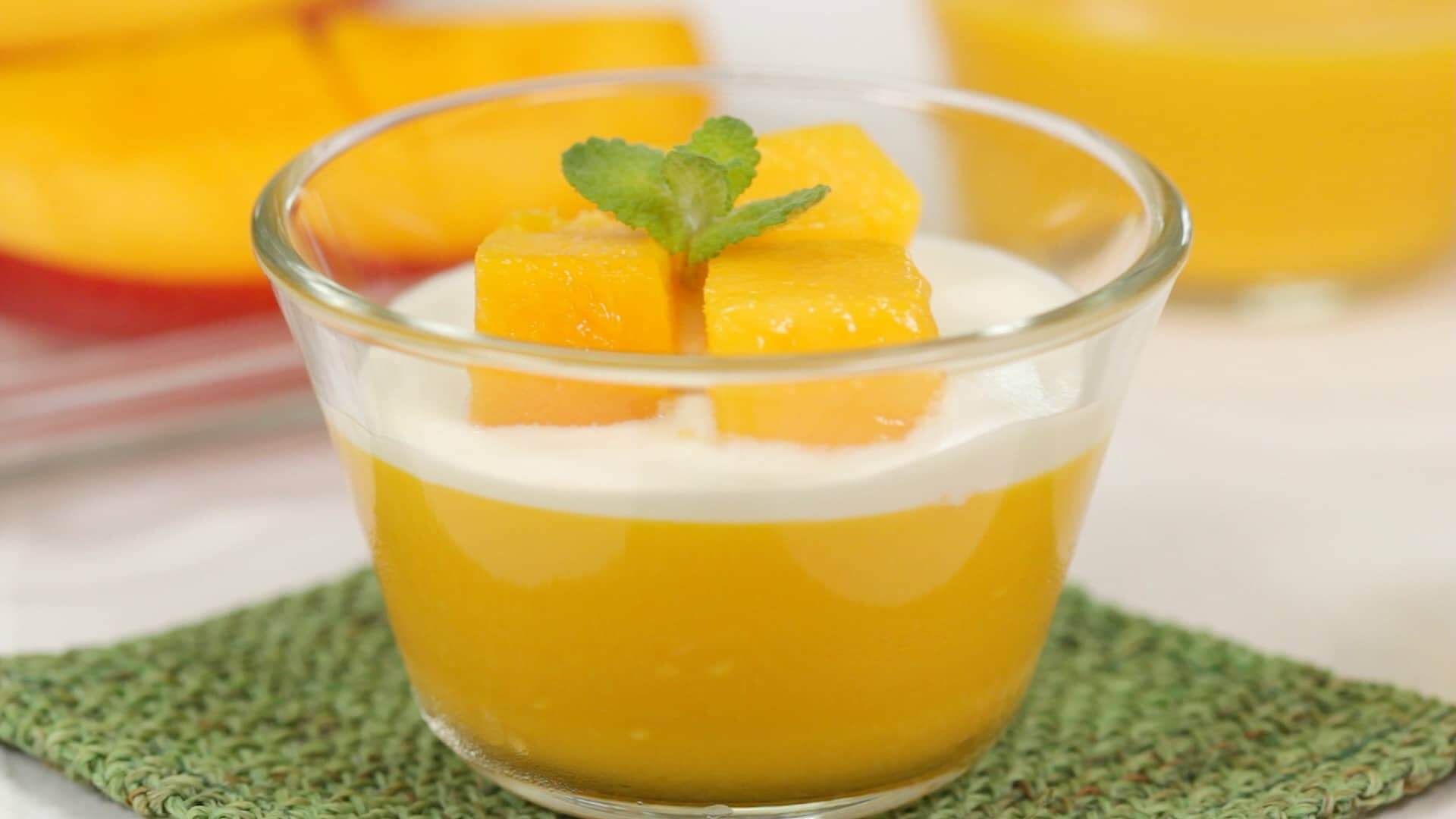
Ingredients:
- 200g mango
- 50ml cream
- 2 tsp lemon juice
- 150ml water
- 30g sugar approx.
- 4g powdered gelatin
- Whipped cream
Preparation:
- Let’s make mango pudding. Heat water in a pot. When small bubbles start to form around the surface of the bottom, remove the pot from the heat.
- Add the sugar and mix until dissolved. The sweetness depends on the type of mango, so adjust the amount of sugar accordingly.
- Add the gelatin powder and dissolve it completely. There are many types of powdered gelatin, so be sure to follow the directions on the package.
- Add the gelatin mixture to a bowl with the mango puree and mix. Add, the cream. Mix well.
- Add lemon juice to taste. If the mango puree you have is very acidic, you should skip the lemon juice.
- Pour the mixture into 5 small cups. Let cool in the fridge for more than 2 hours. If you’re in a rush, put them in the freezer for 40 to 50 minutes.
- Now the mango pudding is firm. Spoon the lightly whipped cream over the pudding.
Mango Salad
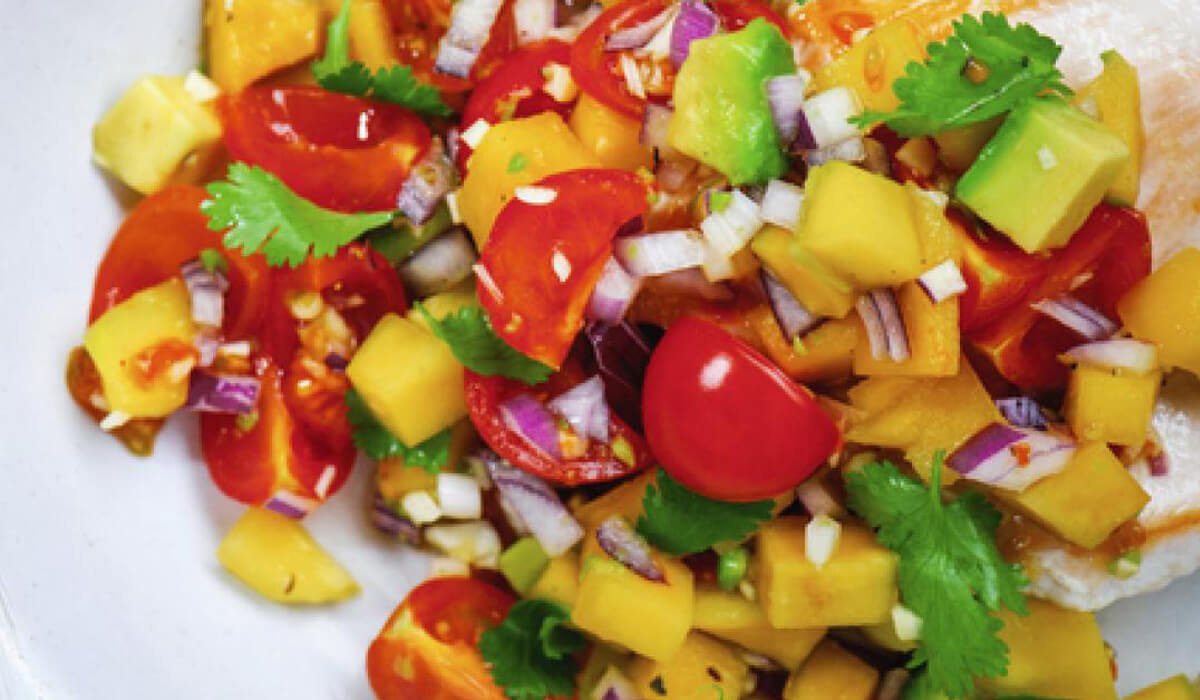
Ingredients:
- 1 mango
- 1/4 cup red bell pepper
- 1 green onion
- 2 tablespoons coriander chopped
- 1 jalapeno pepper, minced
- 2 tablespoons lime juice
- 1 tablespoon of lemon juice
Preparation:
- To prepare the mango salad recipe, first peel the mango and remove the seeds. Then cut it into cubes.
- Also cut the red pepper into cubes, then wash the green onion well and chop it fine, very small.
- In a medium bowl, combine all ingredients, mixing well.
- Then cover the container with plastic wrap and place the salad in the fridge for at least 30 minutes before serving.
- Serving it cold is best, the flavors are more intense, and the salad feels much fresher.
- If you like original, different, and fresh salads, then we suggest you learn how to make this mango salad recipe and invent your own salad recipes for hot days.

